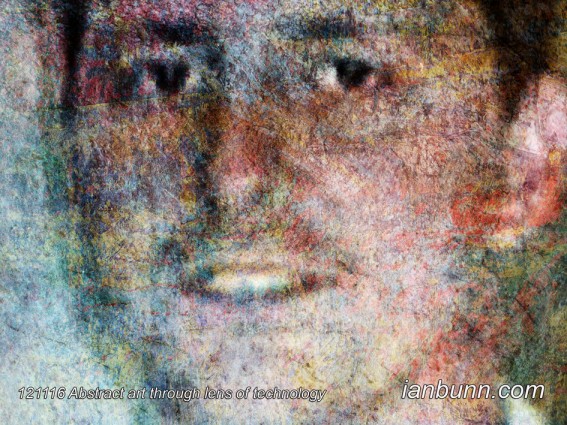![Daniel Buren the 74 year old French conceptual artist, classified as an abstract minimalist known best for using regular, contrasting maxi stripes to integrate the visual surface and architectural space, notably historical, landmark architecture. Among his chief concerns is the ‘scene of production’ as a way of presenting art and highlighting facture (the process of ‘making’ rather than for example, mimesis or representation of anything but the work itself). The work is site specific installation, having a relation to its setting in contrast to prevailing ideas of a work of art standing alone. Buren has been profiled in an article by Roberta Smith for the New York Times titled ‘Daniel Buren: 'Electricity Fabric Paint Paper Vinyl ...', Smith states “[Buren] who reduced painting to awning stripes printed on canvas or paper some 40 years ago, has probably eked more mileage out of this signature end-of-painting motif than any artist could logically expect. …Buren shows the latest versions of site-specific works in vertically striped paper that date back three and four decades. These pieces are, in effect, intermittent expanses of wallpaper that alter our sense of a space and create a nice graphic, even decorative punch. …Buren takes up the striped canvas again, but with several twists. In one he layers the canvas with white-striped Plexiglas to block or expose the colored stripes beneath. In the other group glam-rock chic prevails: the canvas is luminescent, cut with a curved or a diagonal edge that is lined with a glowing strand of fiber optics. Despite their newness, these pieces conjure the early-1960s work of artists like Frank Stella and Robert Mangold; they are arbitrary and conventional, and could be derivative student works that Mr. Buren abandoned to make the site-specific pieces at Petzel. Mr. Buren gets credit for choosing art over ideology, but he has to do more than relearn old tricks.” Inspired by Roberta Smith, New York Times ow.ly/hYBrJ Image source Français ow.ly/hYBqs](http://www.ianbunn.com/wp-content/uploads/2013/03/130305dcU60.jpg) 130305 Electricity Fabric Paint Paper Vinyl
130305 Electricity Fabric Paint Paper Vinyl
Daniel Buren the 74 year old French conceptual artist, classified as an abstract minimalist known best for using regular, contrasting maxi stripes to integrate the visual surface and architectural space, notably historical, landmark architecture. Among his chief concerns is the ‘scene of production’ as a way of presenting art and highlighting facture (the process of ‘making’ rather than for example, mimesis or representation of anything but the work itself). The work is site specific installation, having a relation to its setting in contrast to prevailing ideas of a work of art standing alone. Buren has been profiled in an article by Roberta Smith for the New York Times titled ‘Daniel Buren: ‘Electricity Fabric Paint Paper Vinyl …’, Smith states “[Buren] who reduced painting to awning stripes printed on canvas or paper some 40 years ago, has probably eked more mileage out of this signature end-of-painting motif than any artist could logically expect. …Buren shows the latest versions of site-specific works in vertically striped paper that date back three and four decades. These pieces are, in effect, intermittent expanses of wallpaper that alter our sense of a space and create a nice graphic, even decorative punch. …Buren takes up the striped canvas again, but with several twists. In one he layers the canvas with white-striped Plexiglas to block or expose the colored stripes beneath. In the other group glam-rock chic prevails: the canvas is luminescent, cut with a curved or a diagonal edge that is lined with a glowing strand of fiber optics. Despite their newness, these pieces conjure the early-1960s work of artists like Frank Stella and Robert Mangold; they are arbitrary and conventional, and could be derivative student works that Mr. Buren abandoned to make the site-specific pieces at Petzel. Mr. Buren gets credit for choosing art over ideology, but he has to do more than relearn old tricks.”
Inspired by Roberta Smith, New York Times ow.ly/hYBrJ Image source Français ow.ly/hYBqs
